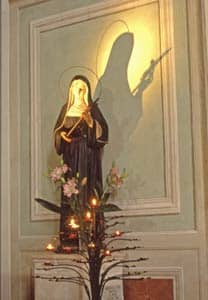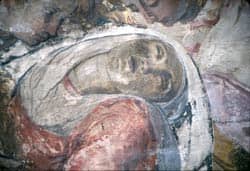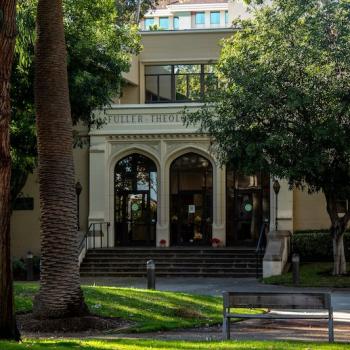I'm very excited about both programs, which are geared for helping all of the participants take their photographs to the next level, but the pace is relaxed enough for everyone. The trip in Italy (September 18-25) includes 3 days in Sorrento in a small hotel just steps away from the Bay of Naples, with visits to Capri and Pompeii, followed by days exploring several of the lesser-known hill towns of southern Tuscany that are renowned for their Etruscan tombs. There we'll be staying in an 11th century castle. Daily critiques by two professional photographers sharpen participants' skills and offer real-world advice on showing and selling your images. After the trip, everyone's photos will be published in a book and featured in a gallery show.
 I know that when we think of ancient Paganism, many people think of Egypt or Greece or Rome, not necessarily Tuscany. Yet this area was home to a thriving and powerful Pagan culture. Can you tell us a little bit about that?
I know that when we think of ancient Paganism, many people think of Egypt or Greece or Rome, not necessarily Tuscany. Yet this area was home to a thriving and powerful Pagan culture. Can you tell us a little bit about that?
Well, fortunately, I did a little research before preparing this program! Tuscany was actually the home of the Etruscan civilization, which pre-dates the Romans significantly, having reached its height in the 7th and 6th centuries BCE. According to everything I've read, its people were particularly known for their zest for life. This zest for living often included elaborate banquets—even at funerals-- featuring prodigious wine consumption, sensual music, and numerous entertainments. Funeral entertainments usually involved "games" like boxing and these matches were often fought to the death. (The Romans also celebrated elaborate funeral games and this may have been the origin of Roman gladiatorial contests.)
Tuscany is a very special place. One of the reasons that we chose Tuscany as the venue for this program is that it's so easy to feel close to nature at Etruscan sites and that may well be a surviving reflection of the way the Etruscans tried to work in harmony with nature. Even their magical practices were tied closely to the natural world; for instance, their diviners (haruspices) would foretell the future using the flight of birds and the sound of thunder. They were famous for their divinations—it was the only part of their culture that the Romans didn't destroy.
In addition to divination, or as an extension of it, the Etruscans believed in predestination. Although a postponement was sometimes possible by means of prayer and sacrifice, they believed the end is certain. According to their libri fatales, an individual was allocated a cycle of seven times twelve years (84 for those of us who are math-challenged). Anyone who lived beyond these years lost the ability to understand the signs of the Gods. The Etruscans also believed the existence of their people was also limited by a timescale fixed by the gods. According to the doctrine, ten saecula were allotted to the Etruscan name. This proved very accurate—the Etruscan people predicted their own downfall. I find this fascinating. (More information on the Etruscans can be found here.) I found this site very helpful, especially when I was researching the region before planning this trip).
We are going to be in the heart of the Etruscan region. We'll be staying at an 11th century castle in Proceno that is run by a family that has lived there for generations. In their common room are urns and other Etruscan relics that have been found on their land. In addition to this, we'll be visiting Etruscan tombs in Pitigliano, Sorano and Sovano: three ancient towns built out of the tufa.
 Tuscany still has that Etruscan energy—the zest for living, the food, wine and also a healthy respect for signs and portents. If you've ever been to Italy, you know how wonderful it is. If you've never been there, you owe it to yourself to get there. It's that special.
Tuscany still has that Etruscan energy—the zest for living, the food, wine and also a healthy respect for signs and portents. If you've ever been to Italy, you know how wonderful it is. If you've never been there, you owe it to yourself to get there. It's that special.
Now, you'll also be going to Basque country. Can you tell me a little bit about that?
In April 2012, we will be exploring Bilboa and the Basque country in northeastern Spain. As with the Italian trip, this one is embedded in one of the oldest inhabited parts of the earth. The Basque people speak a non-Indo-European language to this day and the traditional skills are still honored. Part of the Camino de Santiago, an old pilgrimage route, runs through the countryside, and on our tour we will walk portions of it.
The journey, the path, has had sacred significance from prehistoric times. The pilgrim's road seems related to prehistoric cults of fertility. Symbols that may be of Astarte (the star within the circle), or of Aphrodite (Venus on a shell), have been found along the route. Among the ancient Basque mythology and legends are those related to Mari, the Mairu and the rising of Megaliths. (Joseph Campbell associated the cult of Mari to that of Ishtar and Kali.) The scallop, the symbol of the camino pilgrim even today, may have been used in certain Celtic rituals in that area. Some believe the route may have been a pre-Christian Celtic death journey towards the setting sun, terminating at the End of the World on the Coast of Death and the Sea of Darkness.





